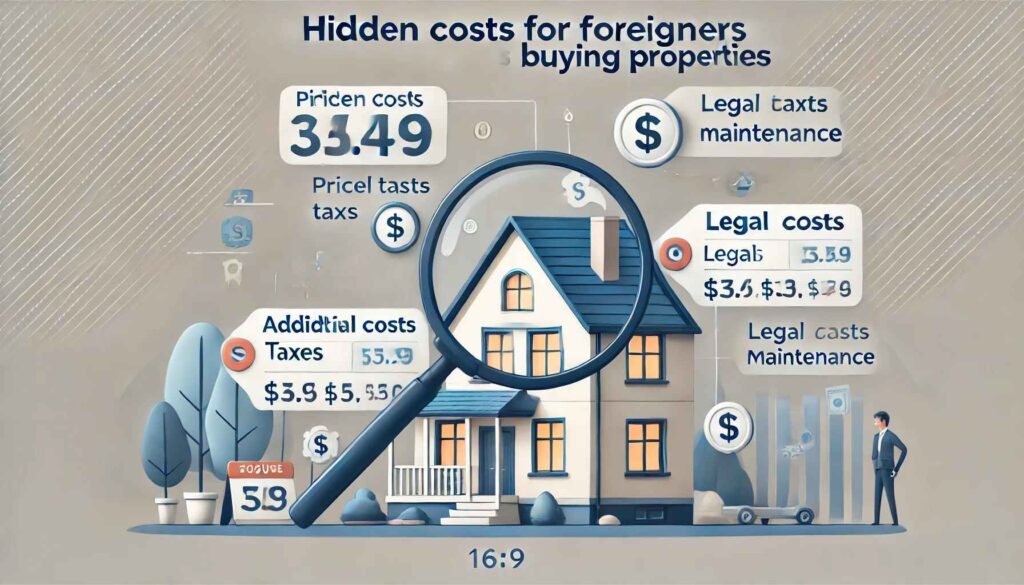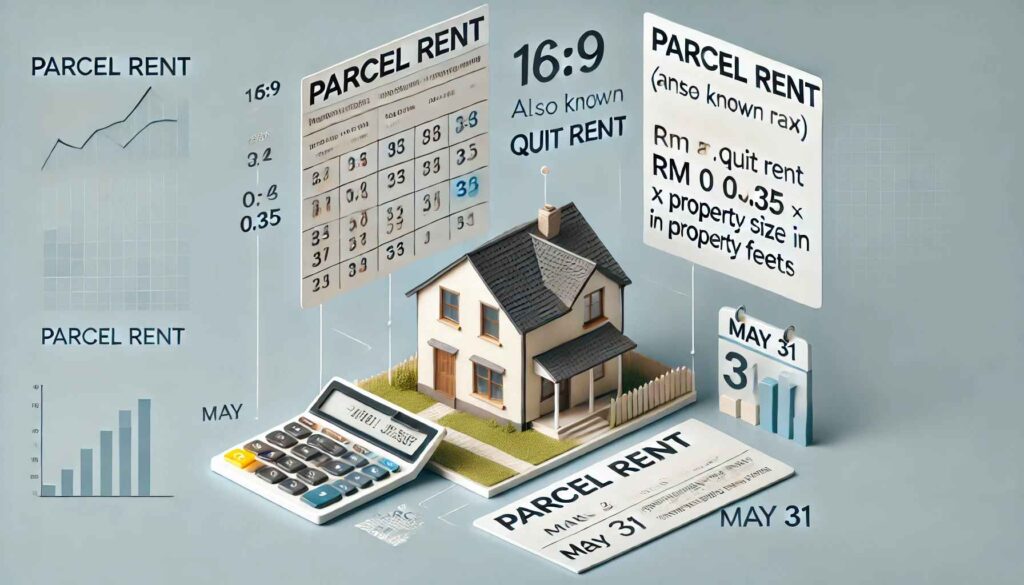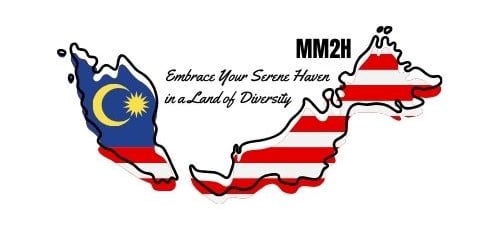10 Hidden Costs for Foreigners Buying Properties in Malaysia: A Comprehensive Guide

Malaysia is a beautiful country with a thriving real estate market, attracting many foreign buyers looking to invest in properties. However, what often comes as a surprise are the “hidden costs” associated with property purchases. These costs can catch buyers off guard and potentially derail their plans. This guide unpacks the top 10 hidden expenses, ensuring you’re fully prepared to make an informed decision.
1. Stamp Duty on Memorandum of Transfer (MOT)
The Stamp Duty on MOT is a government tax applied when transferring property ownership from the seller to the buyer. For foreign buyers, this fee is a flat 4% of the property’s purchase price.
For instance, if you purchase a property worth RM 1,000,000, your stamp duty will be RM 40,000. Additionally, if you’re financing your purchase with a loan, there’s an extra 0.5% stamp duty on the total loan amount. A RM 500,000 mortgage, for example, incurs an additional RM 2,500 in stamp duty.
2. Legal Fees for Sale and Purchase Agreement (SPA)
In Malaysia, buyers must appoint a lawyer to draft and finalize the Sale and Purchase Agreement (SPA). The legal fees are approximately 1% of the property’s value.
For a property valued at RM 1,000,000, the SPA legal fee would be around RM 9,000. If you’re taking out a loan, there’s an additional legal fee for the mortgage agreement, typically about 1% of the loan amount. Discounts on legal fees may be available, so it’s worth asking your lawyer.
3. Valuation Fee
If you’re purchasing a secondary market property and require a mortgage, banks will mandate a professional valuation of the property. This ensures the loan amount aligns with the property’s market value.
The valuation fee is usually around 0.3% of the property’s value. For a RM 1,000,000 property, this translates to RM 3,000.
4. Property Agent Fees
In most parts of Malaysia, sellers bear the property agent fees, which are capped at 3% of the property’s selling price. However, in Johor and Penang, buyers are required to share this cost equally with the seller.
If the property price is RM 1,000,000 and the agent fee is 3%, foreign buyers in Johor or Penang would need to pay 1.5% of the fee, amounting to RM 15,000.
5. Parcel Rent or Quit Rent

Parcel Rent, also known as Quit Rent, is a land tax that property owners must pay annually. This fee is relatively small and calculated based on the size of the property.
In Kuala Lumpur, the rate is approximately RM 0.035 per square foot. For a 1,000 sqft property, the annual Parcel Rent would be RM 35. This amount is payable by May 31 each year.
6. Assessment Rate
The Assessment Rate is another form of tax levied by local authorities to maintain infrastructure and services such as street lighting, waste collection, and public facilities.
In Kuala Lumpur, this tax is calculated based on the property’s estimated annual rental value, multiplied by a 4% rate. For instance, if the property could generate RM 5,000 in monthly rental income (RM 60,000 annually), the Assessment Rate would be RM 2,400 per year. Payments are made in two installments, one by the end of February and the other by the end of August.
7. Utility Deposits
Once the property is transferred to your name, you’ll need to update utility accounts, such as water, electricity, gas, and sewage. Utility providers require deposits, typically equivalent to two months of estimated usage.
While the exact amount depends on the property and provider, this is a cost often overlooked by buyers.
8. Maintenance Fees and Sinking Fund
If you’re purchasing a strata property such as a condominium or serviced apartment, you’ll need to pay monthly maintenance fees and contribute to the sinking fund.
Maintenance fees cover day-to-day operations like cleaning, security, and management, while the sinking fund is reserved for future capital expenditures, such as repainting buildings or replacing elevators.
In upscale areas like Mont Kiara, the combined rate ranges from RM 0.30 to RM 0.50 per square foot. For a 1,000 sqft unit, monthly payments could range from RM 300 to RM 500.
9. Insurance
Most lenders require borrowers to have fire insurance and a Mortgage Reducing Term Assurance (MRTA) or Mortgage Level Term Assurance (MLTA) policy.
Fire insurance protects the property, while MRTA or MLTA policies ensure the loan is paid off in the event of the borrower’s death or disability. The cost depends on the coverage type and duration. Consulting an insurance agent can help you choose the right plan for your needs.
10. Renovation and Repair Costs
Secondary market properties often require renovations or repairs. These costs can include fixing leaks, upgrading outdated plumbing or wiring, or remodeling spaces to suit your taste.
To avoid surprises, it’s advisable to conduct a thorough inspection of the property before purchase. Hiring a professional to assess the unit can save you from costly repairs later on.
Why Are These Costs Considered “Hidden”?
These expenses aren’t deliberately concealed but are often omitted in discussions or overlooked during the buying process. Real estate agents may focus solely on the selling price, leaving buyers unprepared for additional costs.
By understanding these fees in advance, you can avoid unpleasant surprises and budget accordingly.
Conclusion: Plan Ahead for a Smooth Buying Experience
Buying property in Malaysia can be a rewarding investment, but the key to a stress-free experience is being fully informed about all associated costs. From stamp duties and legal fees to maintenance charges and renovation expenses, these “hidden costs” don’t have to catch you off guard.




